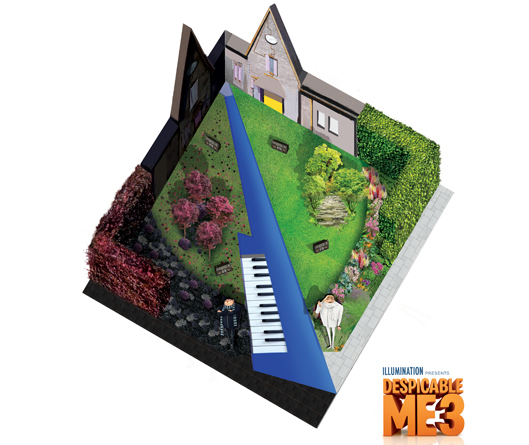
Carl Wright of Caher Bridge Gardens gives us an insight into how he created a garden that is not only beautiful but also wildlife friendly. Gardening for wildlife and the environment has become a very popular concept over the past few years, enjoying much publicity and spawning a considerable industry in ‘green’ gardening accessories. Most people assume that it is only beneficial in urban gardens, offering ‘safe havens’ for wildlife under pressure from urban expansion and encroachment on the surrounding countryside. This however is a miss-conception as amazing results can also be achieved in rural gardens using careful planning and considerate planting schemes. In rural Ireland, one could even argue that gardening with a consideration for wildlife has an equally important role to play in conservation. Most rural ‘new build’ houses are often ‘plonked’ in the middle of a monoculture of green fields. In such situations a well planned garden can very quickly become an ‘Island haven’ for many species which are unable to effectively use the surrounding agricultural land with it’s lack of cover, and limited range of food plants and diversity in habitat types.
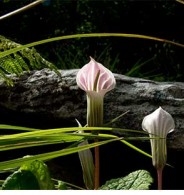
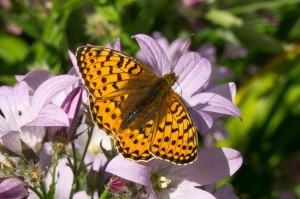
Even where an established garden is surrounded by un-improved agricultural land, or woodland already rich in wildlife, by making a few simple changes to it, the diversity and volume of species present can be greatly enhanced.
When we design and plan a new garden, or even ‘tweak’ an existing one, the vast majority of us gardeners and designers alike, tend, understandably to focus on the obvious. Aesthetics, plants, and maintenance requirements. We mainly concentrate on the visual effect to be achieved through balance of colour, texture, seasonal interest, art and scale. We might even occasionally consider movement and sound by using water or some form of moving art. This has become an ‘accepted’ format and normally achieves its goal with varying degrees of success!
However, whilst this tried and tested approach will normally lead to a successful visual experience, one needs to consider the garden as a balanced and fully functional ecosystem, not only to improve it’s function and general performance, but also to extract its maximum potential to stimulate all the senses and greatly enhance the overall experience within its bounds. This can be achieved so easily by careful planning and careful use of plants. and does not mean filling the space with nettles, brambles, weeds, bird boxes, insect hotels etc as is unfortunately so often the perception of ‘wildlife gardening’!
A garden filled with birdsong and the constant noise of insects is so much more enjoyable and stimulating than just a simple trickle from a contrived water feature. A garden filled with the relentless movement of birds, foraging creatures and insects is immeasurably more dynamic than simply the predictable run of an artificial watercourse or movement of some strangely positioned art feature. And of course a balanced garden full of insects and wildlife will naturally improve the overall function of it as a ‘working’ system.
When I started creating my garden at Caher Bridge twelve years ago, my main objective was to create ‘a garden’. I am an avid collector of plants, and have a passionate interest in the design and architectural elements of gardens. But I also wanted it to become a dynamic, living garden, which would stimulate all the senses and emotions and allow me to enjoy it on as many different levels as possible. I started with a blank canvass, (it is totally new) but had the advantage of starting with an established piece of mostly immature hazel/ash woodland, a fabulous natural resource rich in species that appreciated the dense cover and damp, dark north facing conditions that it provided. I saw very few butterflies and moths though, and the range of visiting birds was surprisingly limited. Bats used the house as a roosting site, but were seldom seen nearby, preferring to hunt in the more open spaces away from the house, as did most other small animals.
To create a garden which would also serve to enhance its value for wildlife, I decided to develop a series of interconnecting open rooms and corridors within the woodland itself and in doing so would effectively extend the woodland edges and open up areas to allow more light and air to reach these sections. Allowing more light has also provided more heat, which has therefore created various microclimates within the former woodland.
Even before actually installing the ‘garden’ into these newly cleared sections, the difference in the amount of wildlife using it was very noticeable. Dragonflies, butterflies, moths and a host of other insects immediately began to use the rooms as feeding zones, which, in turn lead to a greater variety and volume of birdlife eager to exploit the new food supply. The bats were also quick to take advantage of newly accessible feeding areas.
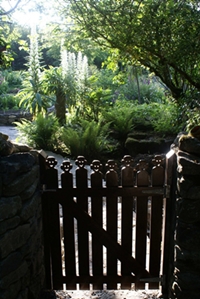
Caher Bridge Gardens
The cleared areas have now become the actual garden and are filled with a vast array of ‘garden’ plants, design elements and water features. I have included many ‘weeds’ – native plants which are carefully managed so as not to become ‘real weeds’. Over the past ten years, it has effectively developed into a warm, sunny oasis of nectar and food, protected by the surrounding woodland and house, but at the same time it is ‘a garden’.
The amount and variety of creatures that are now using it is quite astounding, I have become almost as obsessed with them as I am with my plants! Indeed most visitors to the garden comment on the ever-present cacophony of twittering, humming and buzzing to be enjoyed on a warm sunny day. If you have an established garden, whatever it’s size and wherever it’s location, by just making a few small changes you can make an enormous difference to the fellow creatures that use it. If designing a new garden, by attempting to create ‘natural’ habitat types, and attempting to ‘link’ it to the surrounding landscape, and with a careful selection of plants, (they do not have to be nettles!) You will achieve a result that not only looks good but also will work well as an entire ecosystem.
In a surprisingly short space of time you will have created a dynamic, exciting space filled with structure, colour, movement, sound, scent and emotional stimulation.
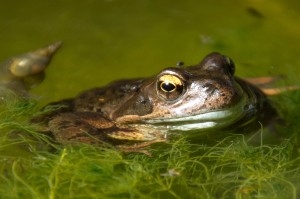
Wildlife in the Garden
I believe a good garden should be so much more than a functional, sterile extension of our living space; it should be alive and buzzing, bursting with energy and action. …. It’s a jungle out there! … Enjoy it!.
Source: GLDA – Birdsong and Butterflies in the Burren



